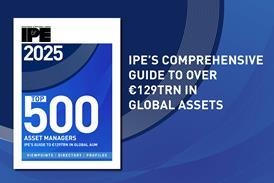The case for an EU consolidated tape
Liquidity. Equality. Fragility. With apologies to the French Republic, these three words almost act as a lodestone in discussions about a consolidated tape (CT) for EU securities. The need for such a tape is becoming more apparent than ever, but it could still be three years or so before it become a reality, according to Susan Yavari, regulatory policy adviser at the European Fund and Asset Management Association (EFAMA) and the author of a detailed official position paper on the subject published in mid-February.
This content is only available to IPE Members
Already an IPE Member? Sign in here
Unlock your IPE Membership Package
For unlimited access to IPE’s industry-leading market intelligence, comprising news, data and long-form content on European pensions and institutional investment.
What type of organisation do you work for?
- Secure online payment
- Free European delivery
- Best value for price
IPE Membership
IPE has created a suite of products and services for Europe’s institutional investment and pensions community.
Premium content
Pension fund interviews,
country analysis and data
country analysis and data
Opinion and analysis
Asset classes
and strategies in depth
and strategies in depth







